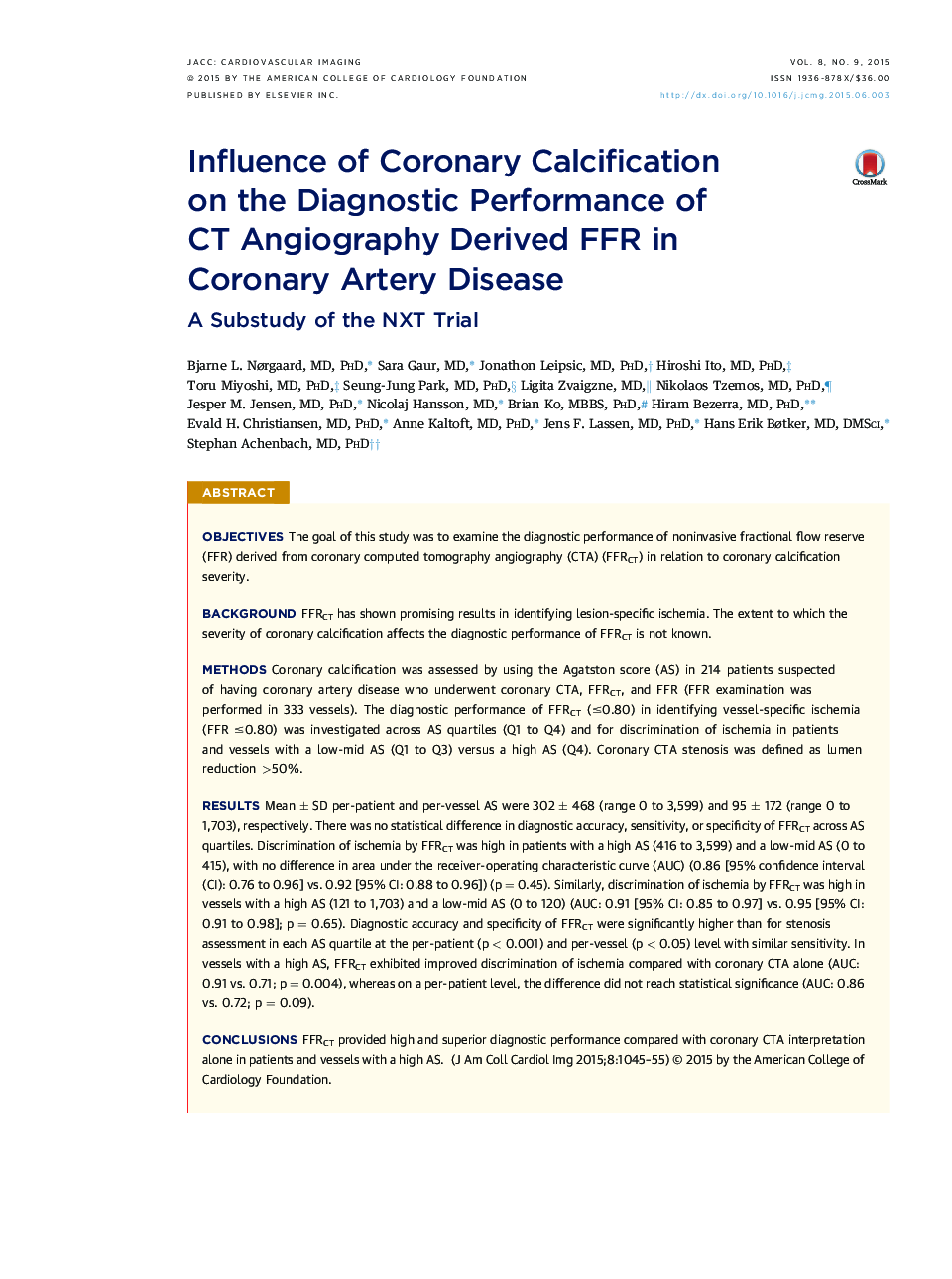| کد مقاله | کد نشریه | سال انتشار | مقاله انگلیسی | نسخه تمام متن |
|---|---|---|---|---|
| 2937916 | 1176908 | 2015 | 11 صفحه PDF | دانلود رایگان |

ObjectivesThe goal of this study was to examine the diagnostic performance of noninvasive fractional flow reserve (FFR) derived from coronary computed tomography angiography (CTA) (FFRCT) in relation to coronary calcification severity.BackgroundFFRCT has shown promising results in identifying lesion-specific ischemia. The extent to which the severity of coronary calcification affects the diagnostic performance of FFRCT is not known.MethodsCoronary calcification was assessed by using the Agatston score (AS) in 214 patients suspected of having coronary artery disease who underwent coronary CTA, FFRCT, and FFR (FFR examination was performed in 333 vessels). The diagnostic performance of FFRCT (≤0.80) in identifying vessel-specific ischemia (FFR ≤0.80) was investigated across AS quartiles (Q1 to Q4) and for discrimination of ischemia in patients and vessels with a low-mid AS (Q1 to Q3) versus a high AS (Q4). Coronary CTA stenosis was defined as lumen reduction >50%.ResultsMean ± SD per-patient and per-vessel AS were 302 ± 468 (range 0 to 3,599) and 95 ± 172 (range 0 to 1,703), respectively. There was no statistical difference in diagnostic accuracy, sensitivity, or specificity of FFRCT across AS quartiles. Discrimination of ischemia by FFRCT was high in patients with a high AS (416 to 3,599) and a low-mid AS (0 to 415), with no difference in area under the receiver-operating characteristic curve (AUC) (0.86 [95% confidence interval (CI): 0.76 to 0.96] vs. 0.92 [95% CI: 0.88 to 0.96]) (p = 0.45). Similarly, discrimination of ischemia by FFRCT was high in vessels with a high AS (121 to 1,703) and a low-mid AS (0 to 120) (AUC: 0.91 [95% CI: 0.85 to 0.97] vs. 0.95 [95% CI: 0.91 to 0.98]; p = 0.65). Diagnostic accuracy and specificity of FFRCT were significantly higher than for stenosis assessment in each AS quartile at the per-patient (p < 0.001) and per-vessel (p < 0.05) level with similar sensitivity. In vessels with a high AS, FFRCT exhibited improved discrimination of ischemia compared with coronary CTA alone (AUC: 0.91 vs. 0.71; p = 0.004), whereas on a per-patient level, the difference did not reach statistical significance (AUC: 0.86 vs. 0.72; p = 0.09).ConclusionsFFRCT provided high and superior diagnostic performance compared with coronary CTA interpretation alone in patients and vessels with a high AS.
Journal: JACC: Cardiovascular Imaging - Volume 8, Issue 9, September 2015, Pages 1045–1055